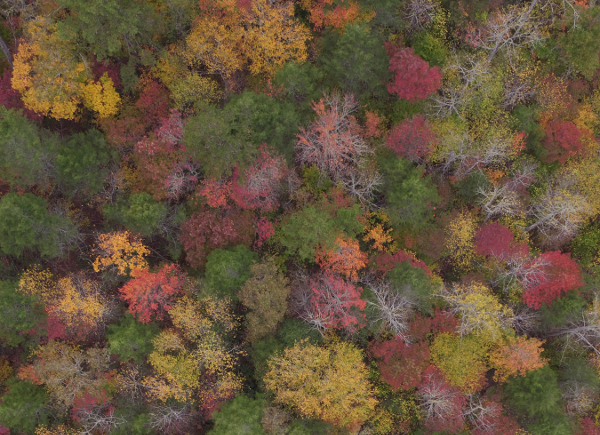
SAL Brown Bag Lunch Seminar Series
UAS@UTK: Drones for Research
The Spatial Analysis Lab (SAL) at NIMBioS is hosting a series of seminars focusing on the use of Unmanned Aerial Systems (UAS) at UTK. The format will be a casual brown bag lunch with a short talk, followed by a question and answer period. The series is organized by Eric Carr (NIMBioS) and Mona Papeş (EEB).
Location: Hallam Auditorium (Room 206) at NIMBioS, in Claxton Education Building, 1122 Volunteer Blvd.
Time: 12:15 – 1:15 p.m.
Upcoming Seminars
TBA
Past Seminars
Date: Feb 1, 2019
Speaker: Shuai Li, Civil and Environmental Engineering, UTK
Topic: Drones for Civil Engineering
Abstract: The horizontal nature of civil engineering leads to some practical and creative applications of drones in the industry. Nearly all the life cycle stages of a construction project can benefit from deploying drones in the field. In this presentation, we will discuss two applications of drones in civil engineering. In the first application, the geo-referenced image acquired by a drone is aligned with virtual image generated from a three-dimensional building information model to expedite the facility inspection process. In the second application, ground penetrating radar is integrated with drones to survey a concrete bridge deck to detect, locate, and characterize structural defects. The challenges of using drones in these applications will also be discussed.
Descriptive Flyer
Date: Nov 2, 2018
Speaker: Xiaopeng Zhao, Mechanical, Aerospace and Biomedical Engineering, UTK
Topic: Planar control of a quadcopter using Brain Machine Interface
Brain Machine interface (BMI) enables promising applications in neuroprosthesis and neurorehabilitation by controlling robotic devices based on the subject's intentions. In contrast to earlier techniques using sensorimotor rhythms, the method here intends to directly extract information of imagined body kinematics and thus can significantly reduce training time. We developed a BMI platform that controls a quadcopter using noninvasively acquired brain signals. Scalp electroencephalogram (EEG) signals of a user's imaginary movements are collected in real-time and translated by a computer to control a quadcopter along a designated path in a two-dimensional space. The BMI paradigm may be utilized in controlling neuroprosthetic limbs and neurorehabilitation devices.
Seminar flyer
Date: Oct 19, 2018
Speaker: Yingkui Li, Geography, UTK
Topic: Mapping topography and surface processes using unmanned aircraft system and structure from motion
Abstract:
The recent development in unmanned aircraft systems (UAS) and structure from motion (SFM) provides a rapid, efficient, and low-cost means to map detailed topography and quantify earth surface processes in a much finer (up to cm-level) resolution. This presentation introduces the recent teaching and research activities associated with UAS and SFM in the Department of Geography, including the accuracy assessment of UAS-mapped topography based on the comparison with the topography generated using the terrestrial laser scanner, and the pros and cons of various software packages and web services in mapping various terrain features (such as ground surface, vegetation, and buildings), and the potential of using UAS and SFM to map the extent and extract the 3-D characteristics of Kudzu.
Seminar Flyer
Date: Sep 14, 2018
Speaker: Michael Buban, Air Resources Laboratory, Atmospheric Turbulence & Diffusion Division, NOAA
Topic:
NOAA UAS Research and Technology Program: Moving research UAS platforms into operations
Abstract: NOAA's Atmospheric Turbulence and Diffusion Division (NOAA/ATDD) has been testing small unmanned aircraft system (sUAS) platforms and instrumentation to make high-resolution measurements of thermodynamic properties of the Earth's lower boundary layer and surface for the past four years. The use of sUAS for atmospheric research provides unprecedented access to a heretofore undersampled region of the lower boundary layer. Flights on a routine basis over a variety of land-surface types in various seasons will allow improvements in weather forecast models.
This presentation will cover NOAA/ATDD's most recent developments in evaluating meteorological sensors for suitability for use on its small UAS, calibrating the sensors to NIST-traceable standards, validating the sensors performance against other measurement systems, and assessing the value of small UAS airborne systems for monitoring weather conditions on a routine basis.
Date: May 4, 2018
Speakers: UT System Office of Risk Management
Topic:
Everything About Drones That You Didn't Know You Needed to Know at UT Knoxville
Members of the team will answer questions and discuss registration, usage, regulations, UT guidelines, insurance coverage, safety tips and more.
Date: April 13, 2018
Speaker: Jeffrey E. Moersch, Earth and Planetary Science, UTK
Topic: Unmanned aerial vehicle studies of terrestrial analogs for Mars
Abstract: Terrestrial analogs are places on Earth that share one or more important geologic or astrobiologic characteristics with features found on other planets. In-depth studies of such relatively-accessible locations are useful because they provide a better understanding of the processes that may have been active on other planets, and also because they help us refine our exploration strategies for future planetary missions. Dr. Moersch has worked on terrestrial analog studies related to Mars for the past 20 years using traditional geologic field techniques and recently has added the use of unmanned aerial vehicles (UAVs, or "drones") to his approach. In this talk, the speaker discussed the added value that UAVs bring to this type of work, with examples from terrestrial analog sites in the high Arctic, the Atacama Desert and Altiplano of Chile, the Mojave Desert, and Iceland.
For more information, contact SAL, SAL@nimbios.org.
NIMBioS
1122 Volunteer Blvd., Suite 106
University of Tennessee
Knoxville,
TN 37996-3410
PH: (865) 974-9334
FAX: (865) 974-9461
Contact NIMBioS


